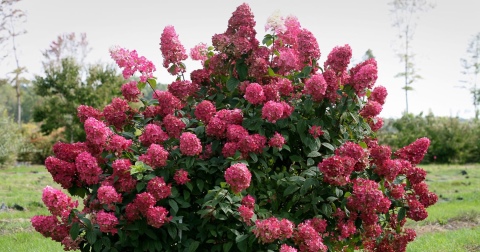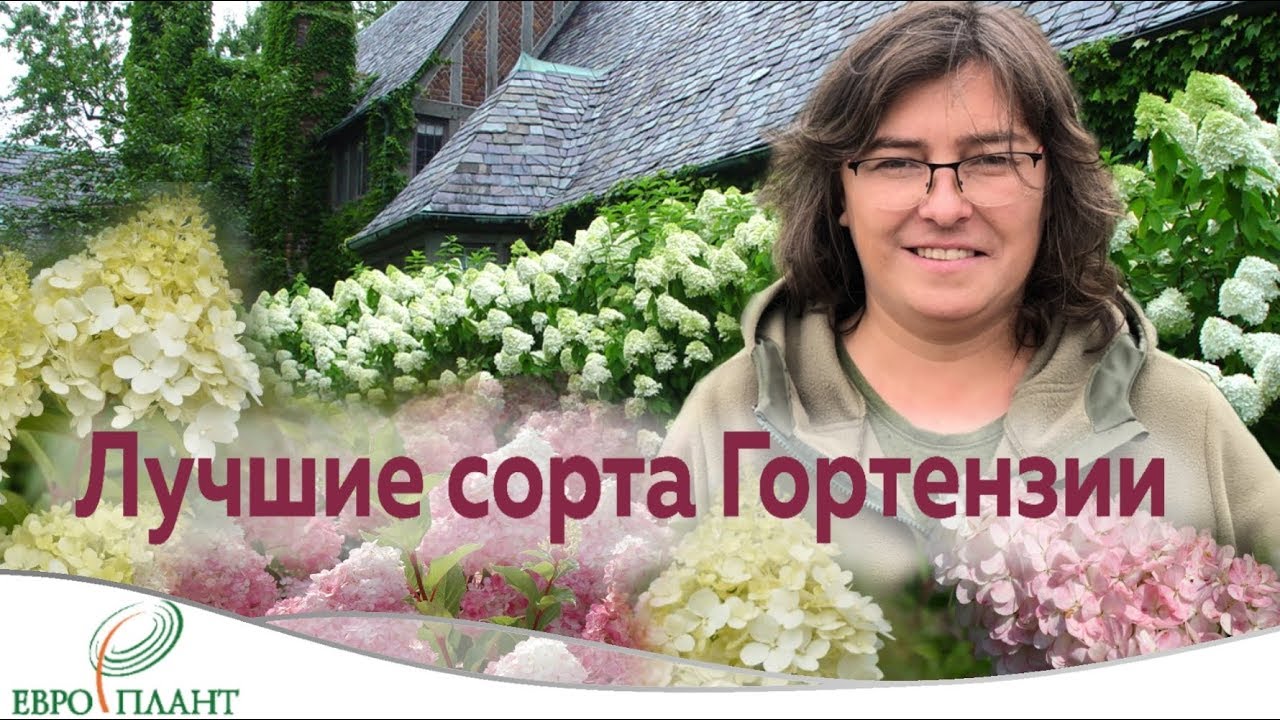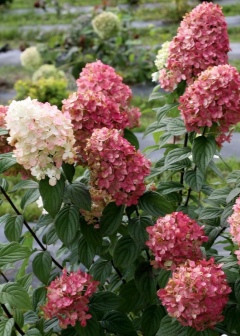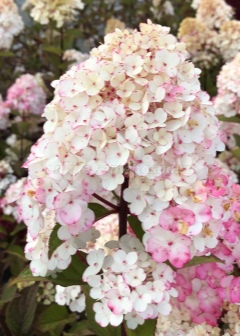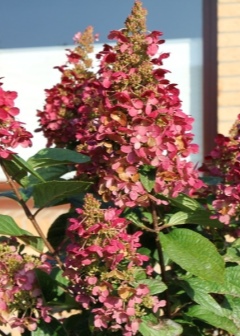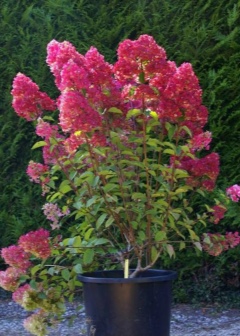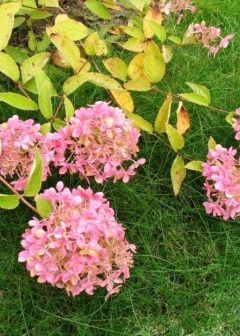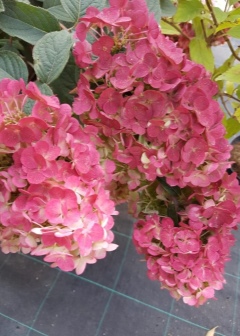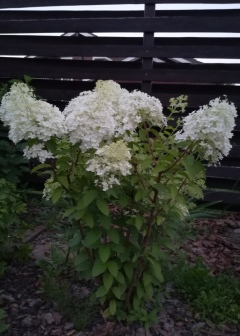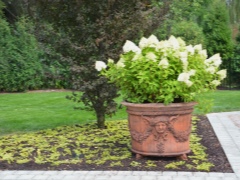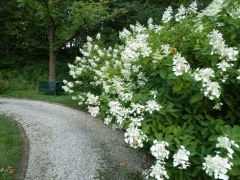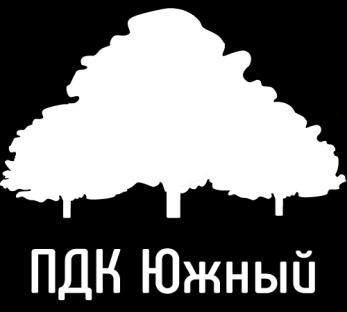How to distinguish between types and varieties of hydrangea?
In reality, this is rather difficult to do. The species should be determined at the time of flowering, when all parts of the bush can be evaluated
Paying attention to the structure of inflorescences, the ratio of sterile and fertile flowers, color, shape and pubescence of the leaves, the degree of lignification of the stems, you can correctly determine the type of shrub and correctly select agricultural techniques
Positive qualities of hydrangea:
- due to the large species and varietal diversity, you can choose the shrub most suitable for your conditions;
- many different types allow the plant to be used as a hedge, in mixborders and flower beds of various types;
- hydrangeas are quite resistant to pests and diseases;
- after damage, the plant quickly recovers;
- can grow on soils of different fertility, tolerates the close occurrence of groundwater, loves acidified soils;
- long flowering period;
- collected inflorescences can be used in dried flower compositions;
- decoctions and tinctures of hydrangea leaves and root have medicinal properties.
Unfortunately, not all species of this beautiful shrub can tolerate cold weather and can be grown in Russia. When keeping hydrangeas, you must strictly follow the rules of care, and then this beauty will delight you with a gorgeous flowering.
Hydrangea Kiushu paniculata: reproduction
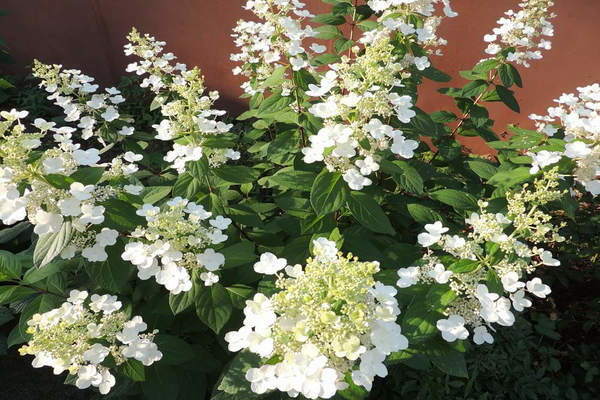
Hydrangea Kiushu in landscape design: photo
Reproduction of hydrangea paniculata Kyushu on a trunk can be carried out in different ways:
The first way is to plant seeds. To do this, mix leafy soil, peat and sand in a ratio of 4/2/1, place in a shallow container, sow the seeds without deepening them and lightly sprinkle with earth. After that, it is necessary to moisten the soil by spraying from a spray bottle and cover with a transparent film to create greenhouse conditions. Watering should be done regularly without allowing the soil to dry out. After 30 days, it will be possible to observe the first shoots and remove the film.
As soon as the cotyledon leaves appear, a pick is carried out. As soon as the fourth leaf appears on the seedlings, a re-pick is carried out, in separate small pots. Tempering can now be carried out. In order for this procedure to be safe for seedlings, they must be exposed outside during the daytime and in places where direct sunlight and drafts will not touch them. The time spent in the garden increases daily. Before planting in the garden, the plant should be at home for 2 years, and with the onset of spring, they are transplanted to a prepared area where they will grow and grow stronger. Planting is carried out after the soil has warmed up. As soon as the seedling reaches the age of four, it can be transplanted into a permanent place of residence. Paniculate hydrangeas are not tolerant of frequent transplants.
The second way is with cuttings. This will require young shoots on which there are several developed buds. They are placed in a growth stimulant solution until the roots appear, and then transplanted into a container. If you plan to plant the cuttings directly into the open ground, then it is necessary to remove the lower leaves completely, and the upper ones by 1/2, this will promote photosynthesis. Having planted the stalk, it must be covered to create a greenhouse effect. After rooting, the cutting can be opened
It is necessary to regularly air and water the seedling.
The third method of propagation - layering Given the fragility and sensitivity of Kyushu roots to any damage, all procedures associated with reproduction should be carried out with caution. Loosening of the bush, which will serve as a mother plant, is carried out in the spring.
After that, a deepening is made, the width of which will be 5 centimeters. Before the buds begin to bloom, you need to bend one shoot to this hole, sprinkle it with soil and put a load that will hold the branch.
The top of the branch remains above the ground and tied to a support to create a vertical position. When the vertical side shoots reach 20 centimeters, it is necessary to spud the plant. It is necessary to sprinkle and water regularly. In the fall, the shoots will give roots and they can be separated from the bush and planted in a growing area.
Planting and caring for panicle hydrangea Weems Red
The duration of flowering, the number of inflorescences and the brightness of their color depend on the observance of certain agrotechnical measures. Let us consider in more detail the rules for planting and caring for Weems Red hydrangea.
Recommended timing
Planting dates are determined by the characteristics of the climatic zone. So, for the northern and central regions, spring planting is preferable. A seedling planted in open ground has time to take root well, adapt and take root in a new environment.
For the southern regions of Russia, both spring and autumn planting is suitable. In autumn, only completely healthy and well-formed seedlings are planted in unprotected soil. Planting can be performed from September to the first decade of October.
Choosing a suitable location and soil
Panicle hydrangea grows well in partial shade. To plant a seedling, you need to look after a section of the garden protected from the wind. The abundance of sunlight is undesirable for decorative culture - the inflorescences will begin to fade. Do not plant in the shade. The complete absence of the sun negatively affects the decorative and vitality of the shrub.
We do not recommend planting a Weems Red hydrangea seedling next to tall fruit crops, they take a lot of moisture from the soil.
Author's advice
Weems Red prefers a loose, fertile substrate with an increased or neutral level of acidity.
Please note that it is the degree of acidity of the soil that determines the intensity and saturation of the bloom. It's simple: the more acidity, the brighter the color of the inflorescences.
Sandy or alkaline soil is not suitable for growing Weems Red hydrangeas. Avoid planting the crop in soil with a high lime content.
Landing algorithm
It is better to prepare the planting material yourself or buy it in a gardening nursery. Seedlings with a closed root system, which are removed from containers before planting, take root well.
The plant should look fresh and healthy. Signs of poor-quality planting material are various damage to the bark and the smell of rot.
Seedlings with a closed root system take root well
The planting hole, the approximate dimensions of which are 40x40 cm, is dug out in advance. To prevent stagnation of moisture in the soil, the bottom of the pit is laid out with drainage materials. Most often, crushed brick, large expanded clay or small pebbles are used.
Garden soil is mixed with peat, humus and river sand. The seedling is buried in a hill formed from a nutritious substrate so that the root collar remains above the ground. The plant is sprinkled with the remaining soil and carefully tamped. A groove is formed along the edge of the trunk circle and moistened abundantly. Then the near-trunk zone is mulched with a layer of peat and hay.
How to water and feed
Since Weems Red belongs to moisture-loving varieties, you need to carefully monitor the moisture level of the soil. The soil under the bushes should be constantly moderately moist.With an abundance of natural precipitation, the plant is not watered. If the weather is hot and dry, 1-2 buckets of settled water are poured under each bush. Under such weather conditions, the recommended frequency of watering is 1-2 times a week.
In the spring, when there is an active build-up of green mass, the hydrangea is fed with nitrogen-containing preparations. To increase budding, fertilizing with potassium and phosphorus is performed. Potassium-phosphorus fertilizers are applied during the growing season. Superphosphates are added closer to autumn.
Organic can be used to fertilize Weems Red hydrangea. The plant responds well to feeding with a solution of bird droppings.
Pruning panicle hydrangea
Upon reaching the hydrangea At 3 years of age, annual crown pruning is carried out. First, dry, broken and damaged branches are removed. Then, rejuvenating and shaping crown pruning is performed, the algorithm of which is presented below:
Scheme and rules for pruning panicle hydrangea
Shrub shelter for the winter
The variety has a good winter hardiness threshold. But the bushes grown in the northern and central regions are insulated for the winter, since there are frequent cases of freezing of the shoots. The lower part of the hydrangea is sprinkled with peat, dry leaves and hay. The shoots are carefully collected in bunches and wrapped with a covering non-woven material that does not interfere with air circulation.
In the south, shrubs are cut and mulched with river sand mixed with peat. Such insulation is enough for the successful wintering of decorative culture.
Diseases and pests
Improper farming practices and violation of the rules of keeping leads to diseases and the attack of harmful insects.
Ailments that are common in culture.
Significant lightening of the foliage may indicate the presence of chlorosis. In this case, the leaves of the plant die, but at first they turn yellow, and only the veins retain their green color. By these signs, you can recognize the disease. The reason is the uncontrolled use of humus, an increased percentage of lime, which the culture does not tolerate, and a deficiency of iron in the soil. All that needs to be done is to feed the shrub, organize watering with acidified water, spray the plant with such products as Ferovit, Antichlorosis, Ferrilene or iron chelate.
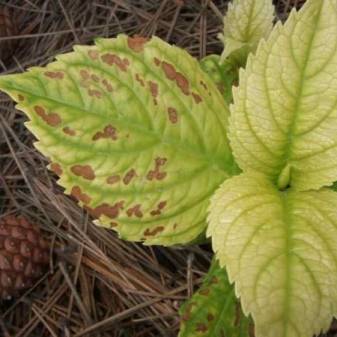
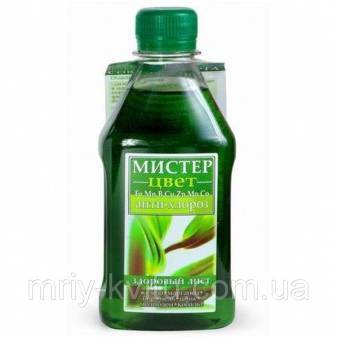
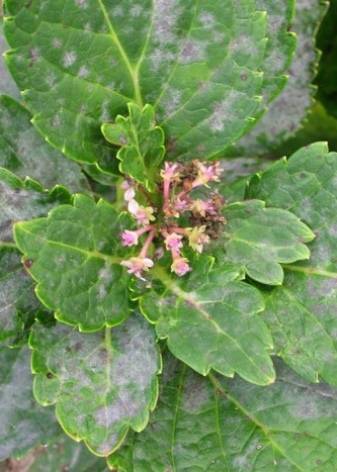
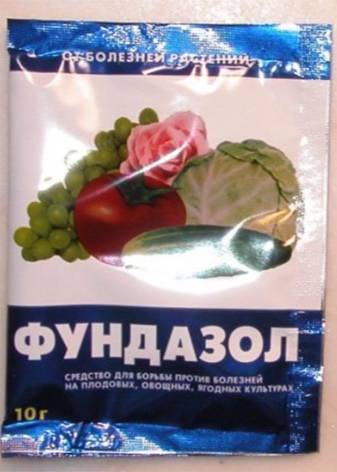
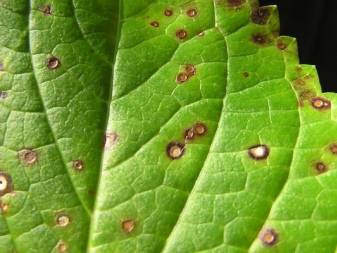
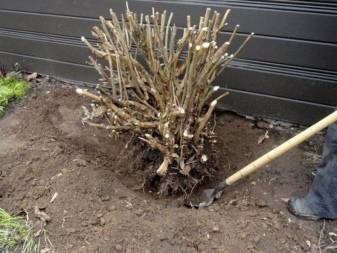

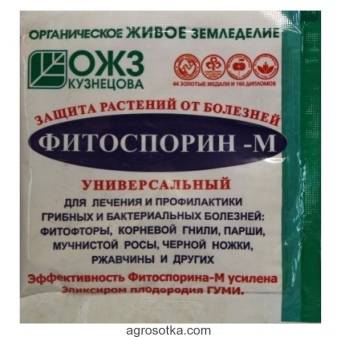
If the petiole culture does not grow well, does not bloom and looks painful, there is reason to assume that it is affected by pests. The most dangerous species for the plant are leafy green aphids, gall nematodes and spider mites. In relation to them, acaricidal anti-mite agents and insecticides are effective - the systemic preparation "Tanrek", "Commander".
A prophylactic agent against viruses and fungus is spraying with Bordeaux mixture (in early spring and autumn), insecticides are applied to the soil before planting, and the seedlings are treated with copper sulfate
In addition, to prevent the appearance of pathogens, it is important to remove weeds and any plant residues in a timely manner.
Varieties and varieties of tree hydrangea for the Moscow region
This type of hydrangea is the most common in Russia. It adapts well to temperature extremes and climate. When planting several species side by side with different budding times, you can get a continuously blooming garden. The most popular varieties for cultivation in the Moscow region are varieties with high frost resistance.
White
Along with panicle hydrangea such as Grandiflora, tree varieties with snow-white inflorescences are very popular:
- Arborescent. The shrub is densely covered with beautiful inflorescences. It tolerates frosts well without additional shelter up to (-30 ° C);
- Incrediball. The plant has a strong stem, which provides it with reliable protection from strong winds and bad weather. Rounded inflorescences consist of snow-white or creamy flowers;
- White Dome.This variety has unique snow-white inflorescences framed by several individual cream-colored flowers;
- Annabelle. An unpretentious plant with super winter-hardy characteristics. Its inflorescences are small spherical in shape, the leaf is large enough, up to 15 cm in length.
Pink
One of the brightest representatives of this species is Annabelle. This unique plant of the Pink variety is resistant to severe frosts and negative external factors. At the beginning of flowering, the buds are bright dark pink in color. Then they gradually turn bright pink.
Note! Another variety is known - Invinzible, notable for its delicate pink flowers

Hydrangea Pink Annabelle
Red
The compact bushes of the Red Hot variety with scarlet inflorescences have come to the liking of many flower growers. The bush always looks festive. During active flowering, it seems to be on fire.
Terry
Gorgeous terry hydrangea Papillon with delicate velvety inflorescences will decorate any garden. The buds have different colors: from pink to red interspersed with green.
One of the newest varieties Hayes Starburst differs from its relatives in narrow leaves and small spherical inflorescences.

